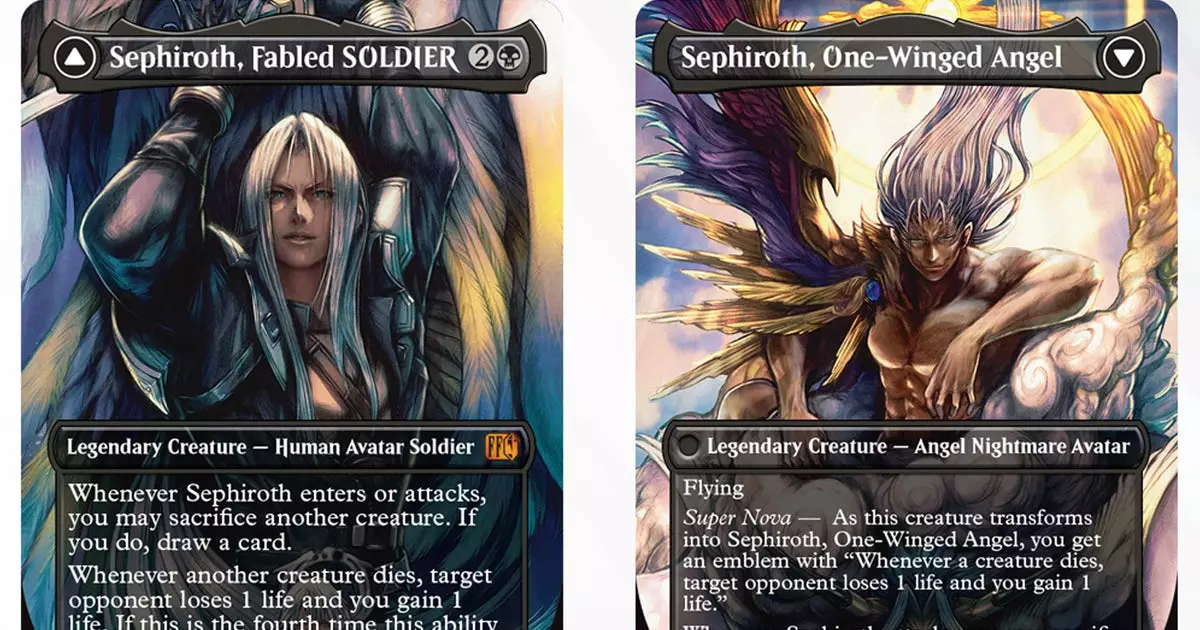Tetsuya Nomura, the genius behind some of the most iconic video games, notably the Final Fantasy series and Kingdom Hearts, often deserves recognition beyond his serious contributions to the gaming world. His unique blend of creativity, wit, and a knack for whimsy often goes unnoticed, yet it permeates his interactions with fans and the gaming community at large. Over the years, especially with the rise of social media, Nomura has cultivated a fascinating persona that balances the enigmatic with the entertaining. His ambiguous tweets and teaser posts create a tapestry of mystery that, while sometimes frustrating, is undeniably comedic.
Imagine following a maestro who leaves breadcrumbs of intrigue but never quite leads you to the loaf of bread. Such is the case with his cryptic messages, like the recent hints about the paopu fruit lore in Kingdom Hearts—a topic that might seem trivial but illuminates the deep emotional undertones of the series he has lovingly crafted. This frivolous yet profound attention to detail serves as both a folly and a celebration, revealing the layers of storytelling that are often overlooked.
Fan Engagement: A Two-Edged Sword
The dichotomy in Nomura’s communication style raises an essential question: to what extent does he understand the fervor of his fanbase? With each vague tweet or deliberate omission, he invites speculation and fuels a culture of anticipation, yet he also risks provoking frustration among fans desperate for concrete information, especially regarding long-anticipated titles like Kingdom Hearts 4. His recent commentary on a card from Magic: The Gathering serves as a fascinating case study in fandom engagement. By integrating Final Fantasy imagery into a different medium, he both connects with a new audience and reignites the passion of die-hard fans.
Yet, with every nod towards his iconic characters like Sephiroth, he walks the fine line between delightful mystery and infuriating ambiguity. His remarks about the different rendition of Sephiroth in the Magic: The Gathering universe—details that might seem inconsequential—trigger a flood of theories and discussions. While some might regard this as playful banter, others view it as a deliberate tease designed to keep the flame of interest alive. The discussions surrounding his choices often overshadow the original content he promotes.
The Art of Teasing: A Double-Edged Sword
One cannot overlook the artistic dimensions of Nomura’s work, especially when it comes to character designs that evolve over time. His dual depiction of Sephiroth on the Magic card—featuring both the menacing final boss form and a more traditional portrayal—exemplifies the duality of his artistic vision. Such creativity embodies the essence of storytelling within game design: characters evolve, and so do the narratives surrounding them. Yet, the choice to alter Sephiroth’s appearance from the original masterpiece raises questions: what deeper lore lies beneath these aesthetic decisions?
The excitement surrounding this juxtaposition speaks volumes about the gaming community’s investment in character development. Fans don’t merely crave the continuation of story arcs; they desire visual and emotional evolution in their beloved characters. Nomura’s vague hints become a permission slip for fans to continue imagining, speculating, and exploring. Yet this artistic tease can be a double-edged sword, as it also leaves fans grappling with uncertainty and speculation that stretches for years, creating an endless cycle of hope and anxiety.
Market Forces and Fan Economies
The announcement of Final Fantasy-themed Magic: The Gathering cards might appear as a mere crossover strategy designed to attract new players to the trading card game. However, this strategic move highlights the growing overlap between fandoms—from video games to card games—and how these connections can deepen fan engagement across multiple platforms. Nomura’s involvement, through artwork and commentary, showcases how powerful cross-platform interactions can invigorate both communities, transforming and expanding the market.
Gamers and collectors alike find themselves in the precarious position of needing to invest their time, money, and often emotional energy into these collectible items. Nomura’s whimsical engagement with fans, embedded within this market reality, further complicates the relationship between the creator, the product, and the consumers. The notion of selling personal possessions to afford coveted cards crystallizes the lengths to which fans are willing to go for mere pieces of art. It reflects a dynamic where passion can lead to both joy and sacrifice, revealing just how entangled art and commerce have become in modern gaming culture.
As Nomura continues to spark discussions, fan theories, and passions across his diverse body of work, the world leans in, captivated by his unique blend of mystery, humor, and artistry. His persona and creative output symbolize a broader narrative about fandoms, engagement, and the intricate dance between creators and their audiences in the ever-evolving landscape of gaming.

